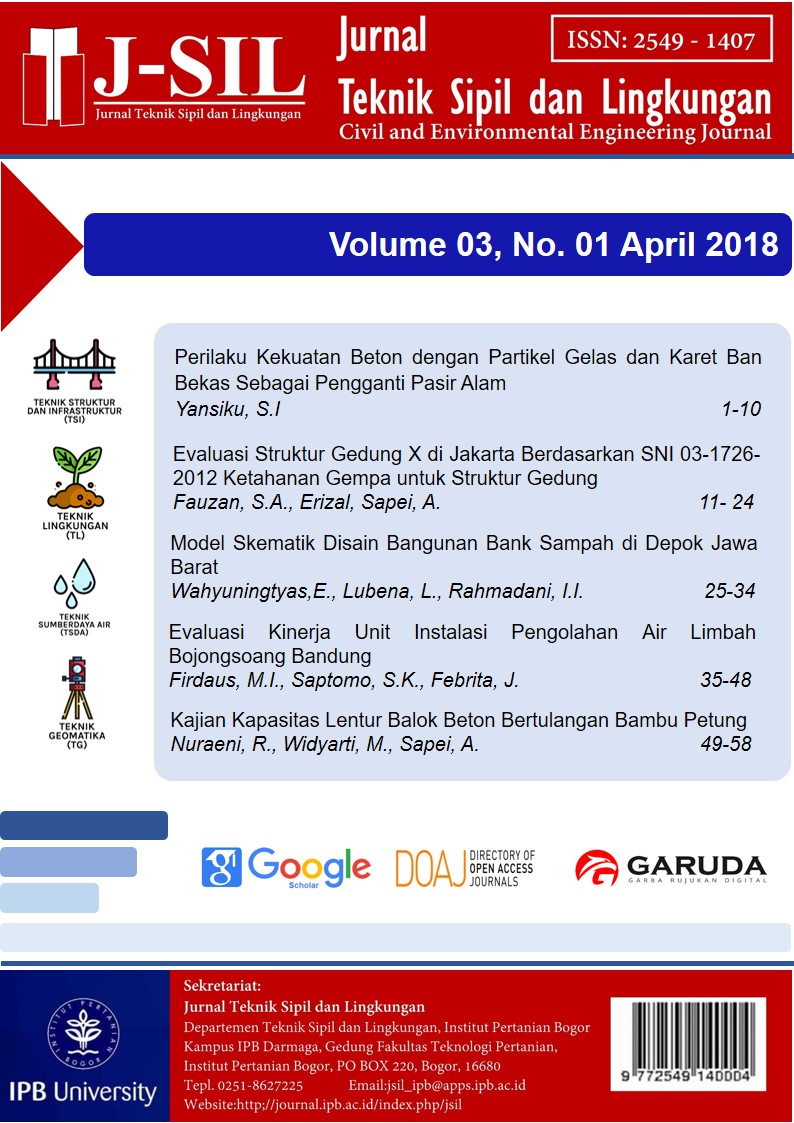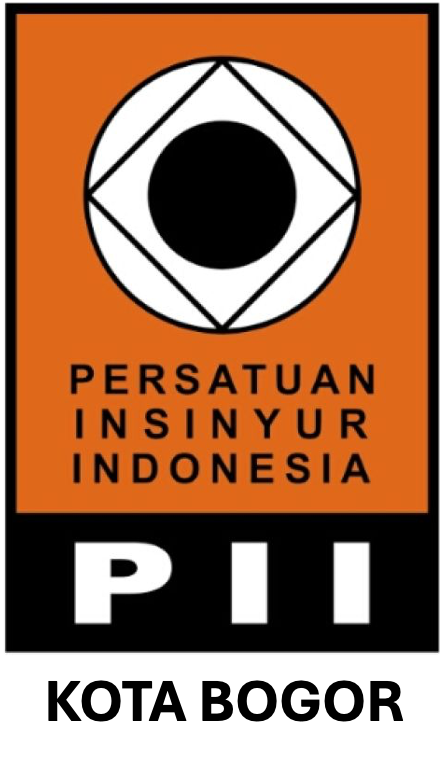Evaluasi Struktur Gedung X di Jakarta Berdasarkan SNI 03-1726-2012 Ketahanan Gempa untuk Struktur Gedung
Abstract
Earthquake risk in Jakarta is one of intermediate category in Indonesia based on the 2010 seismic hazard map published by the Ministry of Public Works of Republic Indonesia. The purpose of this research was to know the ultimate performance limit of the existing X building in Jakarta. Evaluation of these building was based on guidelines SNI 03-1726-2012, SNI 03-2847-2013 and PPPURG 1987. The structure model of X building was designed and analyzed using ETABS Version 9.7.2. The result showed value of story drift was affected by dynamic response spectrum load, the maximum drift in x–direction is 68.60 mm and y–direction is 101.2 mm. The X building was declared unsafe in performance condition of the ultimate limits. It was important to know the condition of the building that would be affected by earthquake load and to prevent collapse of the building structures that could cause loss of live people in the building and the collisions between buildings.
Keywords : building, earthquake, respon spectrum analysis, story drift.
Downloads
References
Afriadi Y, Satyarno I. 2013. Perbandingan spektra desain beberapa kota besar di Indonesia dalam SNI 2012 Gempa dan SNI 2002 [Internet]. Konferensi Nasional Teknik Sipil 7, 24-26 Oktober 2013. Surakarta (ID) Universitas Sebelas Maret. hlm 299- 305; [diunduh 2015 Juni 20]. Tersedia pada http://sipil.ft.uns.ac.id/konteks7/prosi ding/233S.pdf
Asrurifak M, Irsyam M, Hutapea, BM, Ridwan M, Pramatatya AV, Dharmawansyah D. 2013. Pengembangan Peta Klasifikasi Tanah dan Kedalaman Batuan Dasar untuk Menunjang Pembuatan Peta Mikrozonasi Jakarta Dengan Menggunakan Mikrotremor Array. [Internet] 17th Annual Scientific Meeting 2013 November 13-14, Jakarta (ID). hlm. 67-72; [diunduh 2015 Agustus 23]. Tersedia pada: https://www.academia.edu/6296595 /Pengembangan_Peta_Klasifikasi_ Tanah_dan_Kedalaman_Batuan_Da sar_untuk_Menunjang_Pembuatan_ Peta_Mikrozonasi_Jakarta_Dengan_Menggunakan_Mikrotremor_Arra y
Badan Standardisasi Nasional (BSN). 2013. SNI 03-2847-2013 Persyaratan Beton Struktural untuk Bangunan Gedung. Jakarta (ID): BSN.
Badan Standardisasi Nasional (BSN). 2012. SNI 03-1726-2012 Tata Cara
Perencanaan Ketahanan Gempa Untuk Bangunan Gedung. Jakarta (ID): BSN.
Budiono B, Supriatna L. 2011. Studi Komparasi Desain Bangunan Tahan Gempa dengan Menggunakan SNI 03-1726-2002 dan RSNI 03-1726-
X. Bandung (ID): ITB Pr.
Christiawan I, Triwiyono A, Christady H. 2008. Evaluasi kinerja dan perkuatan struktur gedung guna alih fungsi bangunan. Studi kasus: perubahan fungsi ruang kelas menjadi ruang perpustakaan pada lantai II gedung G Universitas Semarang. Forum Teknik Sipil. 18(1): 725-738.
Departemen Pekerjaan Umum (DPU). 1987. Pedoman Perencanaan Pembebanan untuk Rumah dan Gedung. Jakarta (ID): DPU.
Departemen Pekerjaan Umum (DPU). 2007. Peraturan Menteri Pekerjaan Umum Nomor 25/PRT/M/2007 tentang Pedoman Setifikat Laik Fungsi Bangunan. Jakarta (ID). Direktorat Jendral Cipta Karya.
Priyono A, Budi AS, Supardi. 2014. Evaluasi Kinerja Struktur Gedung 10 Lantai dengan Analisis Respons Spektrum ditinjau pada Drift dan Displacement menggunakan Software ETABS. e- Jurnal Matriks Teknik Sipil [Internet]. [diunduh 2015 Mei 19]; 2(3): 534-541. Tersedia pada:http://matriks.sipil.ft.uns.ac.id/ind ex.php/MaTekSi/article/viewFile/249/ 242
Snell LM. 2012. Using the Rebound Hammer [Internet]. Proceedings Of The 11th Annual Mongolian Concrete Conference, June 2012. hlm tidak disebutkan; [diunduh 2015 Juni 21]. Tersedia pada http://wtus.com/pdf/snell_Hammer.pdf
Yalciner H, Sensoy S, Eren O. 2015. Seismic Performance Assessment of a Corroded 50-Year-Old Reinforced Concrete Building. Journal of Structural Engineering. 144(2):1-11. doi: 10.1061/(ASCE)ST.1943-541X.000126
Authors who publish with Jurnal Teknik Sipil dan Lingkungan, JSIL agree to the following terms:
a. Authors retain copyright and grant the journal right of first publication with the work simultaneously licensed under a Creative Commons Attribution License that allows others to share the work with an acknowledgment of the work's authorship and initial publication in this journal.
b. Authors are able to enter into separate, additional contractual arrangements for the non-exclusive distribution of the journal's published version of the work (e.g., post it to an institutional repository or publish it in a book), with an acknowledgment of its initial publication in this journal.
c. Authors are permitted and encouraged to post their work online (e.g., in institutional repositories or on their website) prior to and during the submission process, as it can lead to productive exchanges, as well as earlier and greater citation of published work (See The Effect of Open Access).











